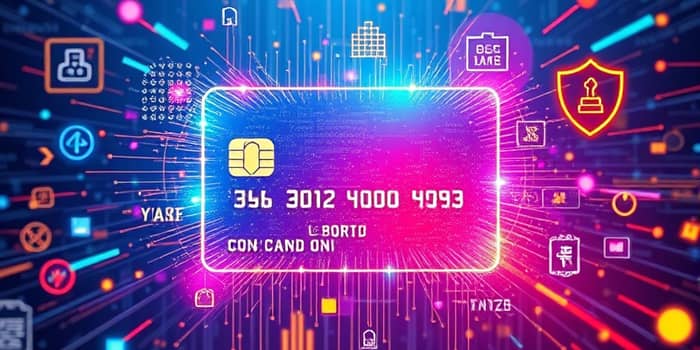In an era where digital transactions dominate daily life, credit card fraud continues to escalate, leaving consumers and financial institutions vulnerable. With projected US losses hitting $12.5 billion in 2025 and global estimates soaring to $43 billion by 2026, understanding and embracing real-time fraud alerts is more crucial than ever.
As fraudsters employ ever more sophisticated techniques, traditional detection methods struggle to keep pace. Real-time alerts offer a proactive shield, intercepting suspicious activity the moment it occurs and empowering cardholders to respond immediately.
Understanding the Rising Threat of Card Fraud
Credit card fraud has surged sharply in both volume and sophistication over the past few years. In 2024 alone, banks reported global losses of $485.6 billion to fraud and scams, illustrating the immense scale of the challenge facing the financial sector. Ecommerce-related fraud in the US has climbed a staggering 140% in the last three years, fueling concerns among nearly 37% of American consumers.
Almost half of global fraud—46%—originates in the United States, where the convenience of online shopping and mobile payments creates ripe targets for malicious actors. Fraud attempts rose 46% year-over-year, underscoring how quickly criminals adapt to new vulnerabilities.
How Real-Time Fraud Detection Works
Modern fraud detection systems leverage algorithmic systems including machine learning to analyze transactions as they occur. By processing streaming data rather than relying on time-consuming batch analysis, these platforms can flag suspicious charges with unprecedented speed.
Machine learning models such as Random Forests achieve a detection rate of over 70% on tested datasets, continually refining their accuracy through pattern recognition and anomaly detection. When a transaction triggers warning signs—unusual purchase locations, abnormally large amounts, or rapid sequence of transactions—the system instantly sends an alert to the cardholder.
Mobile SMS/text alerts are the most prevalent notification method, and many banks auto-enroll cardholders when they provide a mobile number. If a user fails to respond to a text, automated follow-up calls kick in, ensuring automated follow-up call procedures are in place to confirm or deny suspicious charges.
After a real-time alert, the bank may temporarily block the card pending the cardholder’s confirmation. If validated, access resumes immediately; if fraudulent, the institution takes swift remediation steps to block further misuse and issue a replacement card.
Benefits of Immediate Alerts for Consumers and Banks
Real-time fraud alerts deliver a multitude of advantages that extend beyond simply stopping a bad transaction. They build trust, reduce anxiety, and save significant resources.
- Minimize financial loss and hardship by intercepting fraud before it escalates.
- Streamline remediation, sparing customers the lengthy dispute process.
- Decrease operational costs for banks by reducing manual investigations.
- Bolster consumers’ trust and confidence through proactive communication.
According to the Federal Trade Commission, US businesses lost $8.8 billion to fraud in 2022 alone—a 30% jump from the previous year. Financial institutions that adopt real-time systems can dramatically curb such losses and enhance customer satisfaction, which reaches as high as 91% when banks alert cardholders before they spot unauthorized charges.
Practical Steps for Cardholders to Stay Protected
Enrolling in real-time alerts and understanding how to respond can make all the difference in safeguarding your finances. Follow these guidelines to maximize your protection:
- Verify mobile number on file and opt into SMS or push notifications.
- Respond promptly to any alert, confirming or denying the transaction.
- If no response is received, expect an automated call to verify activity.
- Report suspected fraud immediately to your bank’s fraud hotline.
- Request a replacement card if unauthorized charges are confirmed.
By taking these simple actions, you place yourself at the forefront of your own security, significantly reducing the window of opportunity for fraudsters.
The Future of Fraud Prevention Technology
Looking ahead, the integration of artificial intelligence, behavioral biometrics, and advanced analytics promises to further enhance real-time fraud detection. Banks and merchants must invest in these technologies to keep pace with evolving attack tactics and offer cardholders continuous streaming data monitoring and protection.
Automation in credit approval and transaction monitoring not only accelerates legitimate purchases but also fortifies defenses against fraudulent behavior. As machine learning algorithms become more sophisticated, they will detect subtle patterns—such as velocity anomalies or device fingerprint changes—that traditional methods often miss.
Conclusion
In a world where credit card fraud shows no signs of slowing, real-time fraud alerts stand as a powerful line of defense. From reducing losses measured in billions to enhancing consumer trust, the benefits are clear. By enrolling in alert services, responding swiftly to notifications, and supporting banks’ adoption of advanced detection tools, cardholders and institutions alike can create a safer financial ecosystem.
Protect your cards with real-time fraud alerts and stay one step ahead of fraudsters—because when it comes to your financial security, every second counts.
References
- https://resolvepay.com/blog/23-statistics-that-highlight-fraud-risk-in-manual-credit-approvals
- https://corporate.visa.com/en/sites/visa-perspectives/trends-insights/most-common-2024-fraud-trends.html
- https://materialize.com/guides/real-time-fraud-detection/
- https://www.pymnts.com/news/security-and-risk/2025/37percent-of-consumers-highly-concerned-about-credit-card-fraud/
- https://www.scirp.org/journal/paperinformation?paperid=133190
- https://merchantcostconsulting.com/lower-credit-card-processing-fees/credit-card-fraud-statistics/
- https://www.numericacu.com/articles/fraud-alerts
- https://www.feedzai.com/blog/using-fraud-analytics-to-stay-ahead-of-criminals/










